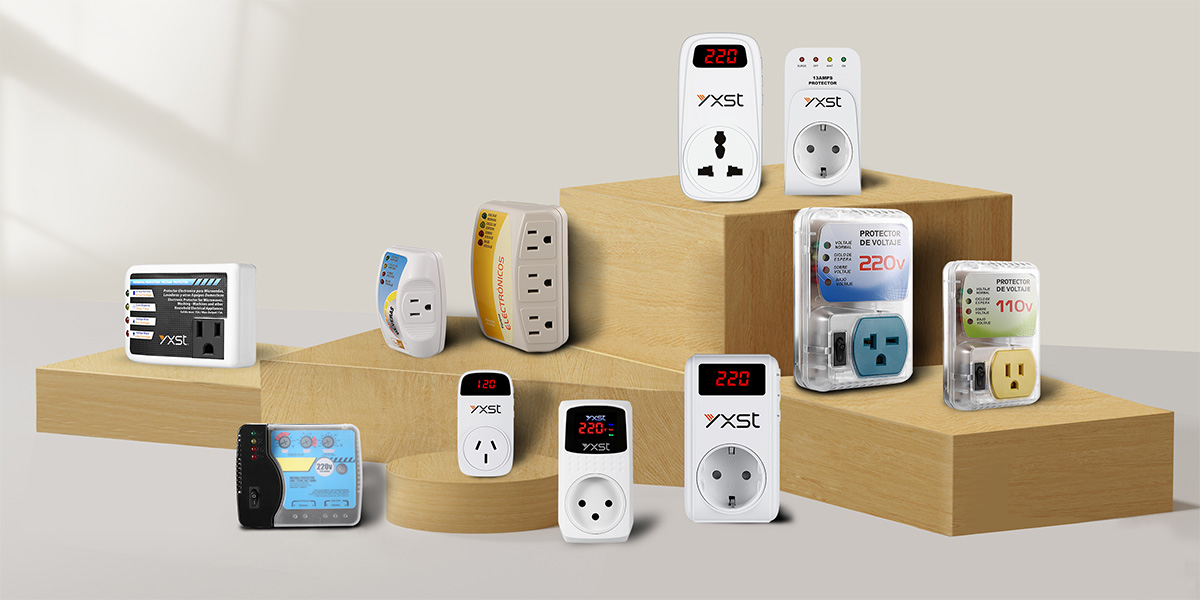1.Design and planning:
Engineers and designers conceive the AVP, including determining the specifications, features, and functions of the voltage protector.
2.Component procurement:
After the design is completed, the voltage protector factory purchases all the components and materials required for manufacturing. These usually include microcontrollers, sensors, relays, capacitors, resistors, and housings.
3.PCB assembly:
The production process usually starts with assembling printed circuit boards (PCBs). Surface mount technology (SMT) machines place and solder components to the PCB according to design specifications. Small electronic components enter the machine’s notches, placing chips and varistors (MOVs) into the PCB circuit board.
4.Bonding chips and substrates:
Automatic chip placement machine firmly bonds the chip and substrate, adds adhesion between chips, and then dries to increase firmness
5.Manual plug-in station
DIP (Dual Inline Package), uses manual insertion of large components.
6.Machine painting, manual soldering
7.Automatic voltage protector performance testing:
Each unit is subject to rigorous testing to ensure functionality and reliability.
8.Housing assembly:
Manufacturing or assembling the outer housing or shell of the AVP. This may involve injection molding of plastic parts or sheet metal fabrication of metal housings.
9.Packaging:
Once a batch of AVPs passes quality control, they are packaged according to specifications. This includes adding user manuals, warranty cards, and any necessary accessories.
10.Shipping and Distribution:
The finished product is then prepared for shipment to distributors, retailers, or directly to customers, depending on the voltage protector factory’s distribution strategy.

The difference between ink printing and laser printing of automatic voltage protector
Advantages of ink printing:
Rich colors: ink can provide a wide range of color options, making the printed products more colorful visually.
Wide applicability: ink printing can be applied to various materials, including paper, plastic, metal, etc., with high versatility.
Strong durability: the ink after drying forms a durable coating on the surface, which has good wear resistance, water resistance, and weather resistance.
Good printing effect: ink printing can produce clear and sharp patterns and texts, suitable for occasions requiring high precision and high-quality printing.
Low cost: Compared with some special printing technologies, ink printing is usually less expensive and suitable for large-scale production.
Disadvantages of ink printing:
Long drying time: The ink takes a certain amount of time to completely dry and solidify, which may affect production efficiency and delivery time.
Environmental impact: The ink may contain harmful substances, such as volatile organic compounds (VOCs), which may have a certain impact on the environment and the health of operators.
Easy to fade: Some types of ink may fade over time or when exposed to UV light, reducing the long-term readability of the printed product.
Requires professional equipment: Ink printing usually requires professional printing equipment and operating techniques, which requires higher technical requirements and equipment investment than some simple printing methods.
Laser printing is a method used for marking or labeling products, including voltage protectors. Here are the advantages and disadvantages of laser printing specifically for voltage protectors:
Laser printing Advantages:
Durability: Laser printing produces marks that are generally highly durable and resistant to abrasion, chemicals, and environmental factors. This ensures that the markings remain clear and readable for a long time.
Precision: Laser printing offers high precision and accuracy in marking. It can create detailed text, numbers, logos, or barcodes with fine lines and sharp edges, which is beneficial for identification purposes.
Speed: The process of laser printing is typically fast once the setup is complete. It allows for efficient marking of a large number of units in a short time, contributing to higher productivity.
Versatility: Laser printing can be used on various materials commonly used in voltage protectors, such as plastics, metals, and coated surfaces. This versatility makes it suitable for different product types and designs.
Environmentally Friendly: Laser printing often uses no consumables like ink or solvents, which reduces waste and environmental impact compared to some other printing methods.
Laser printing Disadvantages:
Limited Color Options: Laser printing is typically limited to marking in a single color (usually black or dark grey). This may not be suitable for applications requiring color coding or aesthetic considerations.
Surface Compatibility: While laser printing is versatile, certain materials and coatings may not be compatible with laser marking, requiring additional surface preparation or alternative marking methods.
Complexity for Variable Data: Producing variable data (such as serial numbers or batch codes) using laser printing can be more complex compared to ink-based printing methods that are more flexible in handling such requirements.
Maintenance: Laser printers require periodic maintenance to ensure consistent print quality and operational efficiency. This includes cleaning optics, replacing parts, and sometimes recalibrating the system.





